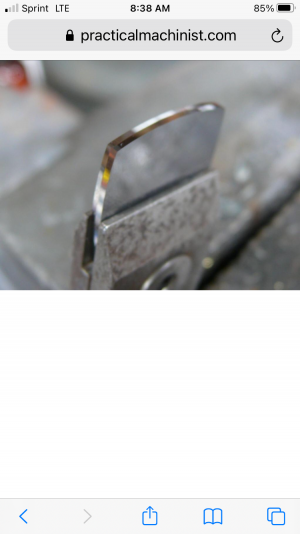Hey all,
I am wanting to venture into the world of scraping. I have watched many videos about it and am ready to try -- but as a hobbyist am not yet ready to invest the amount needed for Richard King's class (though I would love to). I purchased a Sandvik hand scraper that came with a carbide insert, but it doesn't seem the correct radius.
I read elsewhere Richard King posting that he recommends approximately "coffee can" radius for roughing and "soup can" radius for finishing. My current insert seems more like "dinner plate" radius.
Questions:
Kevin
I am wanting to venture into the world of scraping. I have watched many videos about it and am ready to try -- but as a hobbyist am not yet ready to invest the amount needed for Richard King's class (though I would love to). I purchased a Sandvik hand scraper that came with a carbide insert, but it doesn't seem the correct radius.
I read elsewhere Richard King posting that he recommends approximately "coffee can" radius for roughing and "soup can" radius for finishing. My current insert seems more like "dinner plate" radius.
Questions:
- Do most Sandvik (or other manufacturer) inserts come with a large radius, with the understanding that the user will grind them to desired shape?
- I don't have access to a diamond lap, but I do have access to a pedestal grinder with a green wheel designed for sharpening carbide bits. Is this usable? Can a whetstone hone a carbide tool after use?
- Is there supposed to be a rake on the cutting surface, or would it be formed with 90 degree face?
Kevin


